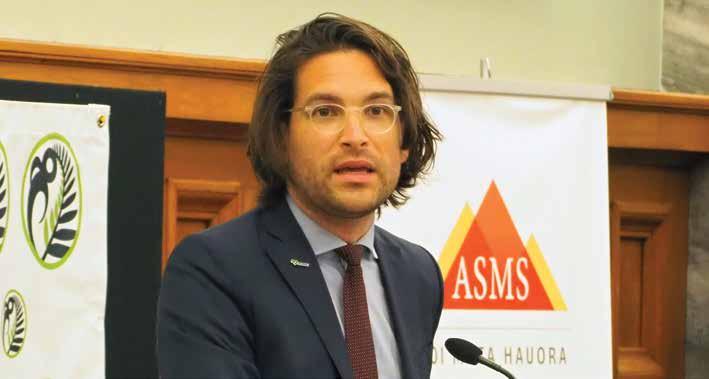
3 minute read
President's column: As a matter of fact
In my previous column I cited Aldous Huxley’s quote that “facts don’t cease to exist just because they are ignored”. In this column I want to ask what happens when we don’t have any facts?
For the last 33 years ASMS has been asking government and health leaders to properly staff the health system. To answer that sort of question, you might expect health leaders would have developed robust methods to measure and report on actual staffing.
Following from that and, again, given how long we’ve been asking, you’d expect our employers to have developed service planning on a proactive basis, not just as a means to catch up with the existing unmet need.
Sadly, you would be wrong on both counts. It would appear none of the above was business as usual under DHBs. Now Te Whatu Ora must make it an immediate priority.
Right now, government does not know exactly how much work dentists and doctors are having to do to keep New Zealand health care afloat. Without that information they can’t plan the recruitment to meet the increased caseloads that will follow tackling ‘unmet need’. Equally, strategies to address the backlog in planned care have no analysis of what this means for health care capacity.
There is a public focus on surgery in addressing planned care. But we know that health care is more than just the number of operations done. Over half of health care provided is for chronic conditions, as opposed to acute care or surgery. Addressing the backlog in planned care may result in a greater need for chronic care capacity too; and not just as a one off, as with surgery.
Equally, simply reducing the number of patients waiting for a first specialist appointment is futile if there is not the capacity to provide their multidisciplinary and long-term outpatient needs as well. The longer-term aim might be to provide such chronic care within community settings. But the current capacity of primary care is also inadequate.
So, to avoid all this and provide for these needs properly, accurate data is vital. Without it, the necessary steady improvement in public health care provision in New Zealand will remain hostage to fortune.
To continue a haphazard approach to workforce planning risks us all facing years more overwork. And overwork will further damage morale, which in turn erodes willingness to contribute to system development.
While Te Whatu Ora faces many immediate demands, now really is the time for this one. For many years, including in our 2020 report Building the Workforce Pipeline, Stopping the Drain, we’ve been calling for the coordination and publishing of a regular medical workforce census. Until now, the fractured DHB management structure has been one key factor that has seen that idea assigned to the too hard basket. Now we have a single employer. It’s time for Te Whatu Ora to get cracking.
Dr Julian Vyas | ASMS President







